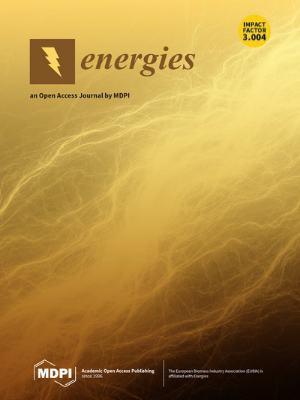Investigating the Role of Byproduct Oxygen in UK-Based Future Scenario Models for Green Hydrogen Electrolysis
IF 3.2
4区 工程技术
Q3 ENERGY & FUELS
引用次数: 0
Abstract
Water electrolysis for hydrogen production with renewable electricity is regularly studied as an option for decarbonised future energy scenarios. The inclusion of byproduct electrolytic oxygen capture and sale is of interest for parallel decarbonisation efforts elsewhere in the industry and could contribute to reducing green hydrogen costs. A deterministic hydrogen electrolysis system model is constructed to compare oxygen inclusion/exclusion scenarios. This uses wind and solar-PV electricity generation timeseries, a power-dependent electrolysis model to determine the energy efficiency of gas yield, and power allocation for gas post-processing energy within each hourly timestep. This maintains a fully renewable (and therefore low/zero carbon) electricity source for electrolysis and gas post-processing. The model is validated (excluding oxygen) against an existing low-cost GW-scale solar-hydrogen production scenario and an existing hydrogen production costs study with offshore wind generation at the multi-MW scale. For both comparisons, oxygen inclusion is then evaluated to demonstrate both the benefits and drawbacks of capture and utilisation, for different scenario conditions, and high parameter sensitivity can be seen regarding the price of renewable electricity. This work subsequently proposes that the option for the potential utilisation of byproduct oxygen should be included in future research to exemplify otherwise missed benefits.调查副产物氧气在基于英国的绿色氢电解未来情景模式中的作用
利用可再生能源发电进行水电解制氢作为未来能源去碳化方案的一种选择,已被定期研究。将副产品电解氧气的捕获和销售纳入其中,对行业内其他地方同时进行的去碳化努力很有意义,并有助于降低绿色制氢成本。我们建立了一个确定性电解氢系统模型,以比较氧气的加入/排除方案。该模型使用风能和太阳能光伏发电时间序列、取决于功率的电解模型来确定气体产量的能源效率,以及每小时时间步内气体后处理能源的功率分配。这样就为电解和气体后处理提供了完全可再生(因此低碳/零碳)的电力来源。该模型根据现有的低成本 GW 级太阳能制氢方案和现有的多兆瓦级海上风力发电制氢成本研究进行了验证(不包括氧气)。在这两项比较中,对氧气的加入进行了评估,以展示在不同方案条件下捕获和利用氧气的益处和弊端。这项工作随后建议,在未来的研究中应纳入可能利用副产品氧气的选项,以体现否则会错过的好处。
本文章由计算机程序翻译,如有差异,请以英文原文为准。
求助全文
约1分钟内获得全文
求助全文
来源期刊

Energies
ENERGY & FUELS-
CiteScore
6.20
自引率
21.90%
发文量
8045
审稿时长
1.9 months
期刊介绍:
Energies (ISSN 1996-1073) is an open access journal of related scientific research, technology development and policy and management studies. It publishes reviews, regular research papers, and communications. Our aim is to encourage scientists to publish their experimental and theoretical results in as much detail as possible. There is no restriction on the length of the papers. The full experimental details must be provided so that the results can be reproduced.
 求助内容:
求助内容: 应助结果提醒方式:
应助结果提醒方式:


